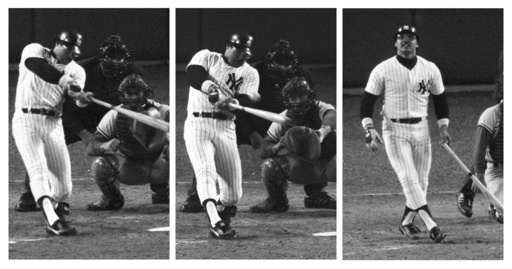
The World Series has long been a display of one of baseball’s most storied rivalries, featuring the Los Angeles Dodgers and the New York Yankees. This much-anticipated rivalry began as a captivating intra-city competition, showcasing the blue-collar identity of Brooklyn versus the upscale image of the Bronx. The phrase “The Subway Series,” coined by the talented sports cartoonist Williard Mullin, reflects the easy 5-cent transit ride between the boroughs to witness this thrilling matchup.
As the two teams face off once again this Friday, it marks the twelfth instance of their intense World Series rivalry. This particular matchup highlights the winning teams of their respective leagues, bringing forth baseball superstars such as Aaron Judge and Juan Soto from the Yankees, alongside the Dodgers’ Shohei Ohtani and Mookie Betts. Past October encounters between these iconic teams have provided numerous unforgettable baseball moments, including Don Larsen’s elusive perfect game and Reggie Jackson’s monumental three-home-run feat in a single game.
The rivalry had a modest inception in 1941 when the Dodgers secured their first National League pennant in over two decades and were pitted against a powerful Yankees squad that was beginning to establish a dynasty. Mullin depicted the two teams in a humorous manner, representing the proud, down-on-their-luck Brooklynites against the boastful Yankees. Ultimately, the Yankees emerged victorious, but not before experiencing a bizarre turn of events involving a last out strikeout that unexpectedly fueled a rally, showcasing the unpredictable nature of baseball.
Early contests were highly competitive, with each team splitting the first two games in New York. The Dodgers seemed poised to even the series in Game 4, leading 4-3, but a mishap involving a wild pitch allowed Tommy Henrich to reach first base and ignite a rally for the Yankees, leading to a shocking 7-4 victory. The Yankees took the championship the following day, marking their ninth World Series win.
The next encounter in 1947 introduced fresh faces like Jackie Robinson, who broke Major League Baseball’s color barrier, and rookie catcher Yogi Berra, who made history with the first pinch-hit home run in World Series history. However, the highlight of Game 4 was Bill Bevens, a Yankees pitcher who nearly achieved a no-hitter despite walks and struggles. His attempt was thwarted by Cookie Lavagetto’s double in a dramatic conclusion that sealed the game for Brooklyn.
In the 1949 Series, the stakes were high again with the teams engaging in thrilling matches that included nail-biting victories on both sides. Brooklyn and New York went head-to-head with high tension through multiple games, with Brooklyn managing a tense 1-0 win in Game 2. However, the Yankees seized the opportunity to win the series following another dramatic game in which Brooklyn faltered despite a lead.
With a rich history of encounters spanning decades, the rivalry continued into the 1950s. The Dodgers finally broke through for their first championship in 1955, becoming the first team in Series history to recover after losing the first two games. Led by pitcher Johnny Podres, the Dodgers pulled off a stunning victory that cemented their place in baseball history.
After the Dodgers relocated to Los Angeles in 1957, the rivalry cooled until it reignited in 1963, leading to a decisive four-game sweep by the Dodgers. Free agency transformed the league in the late 1970s, giving rise to notable players like Reggie Jackson, who made a mark in Series lore by hitting three home runs in a single game during the 1977 matchup against the Dodgers.
When they met again in 1978, the rivalry maintained its intense competition. The Dodgers initially took the lead, but the Yankees countered by winning four consecutive games, showcasing their resilience. The 1981 World Series saw the Dodgers flipping the script by winning four straight after dropping the first two games, an upset that left the Yankees frustrated and caused a confrontational incident involving owner George Steinbrenner.
Now, decades later, the rivalry continues, transformed but still deeply rooted in history. This season’s latest chapter promises to be just as gripping as those written in the past as these teams clash once again on the grandest stage in baseball.
